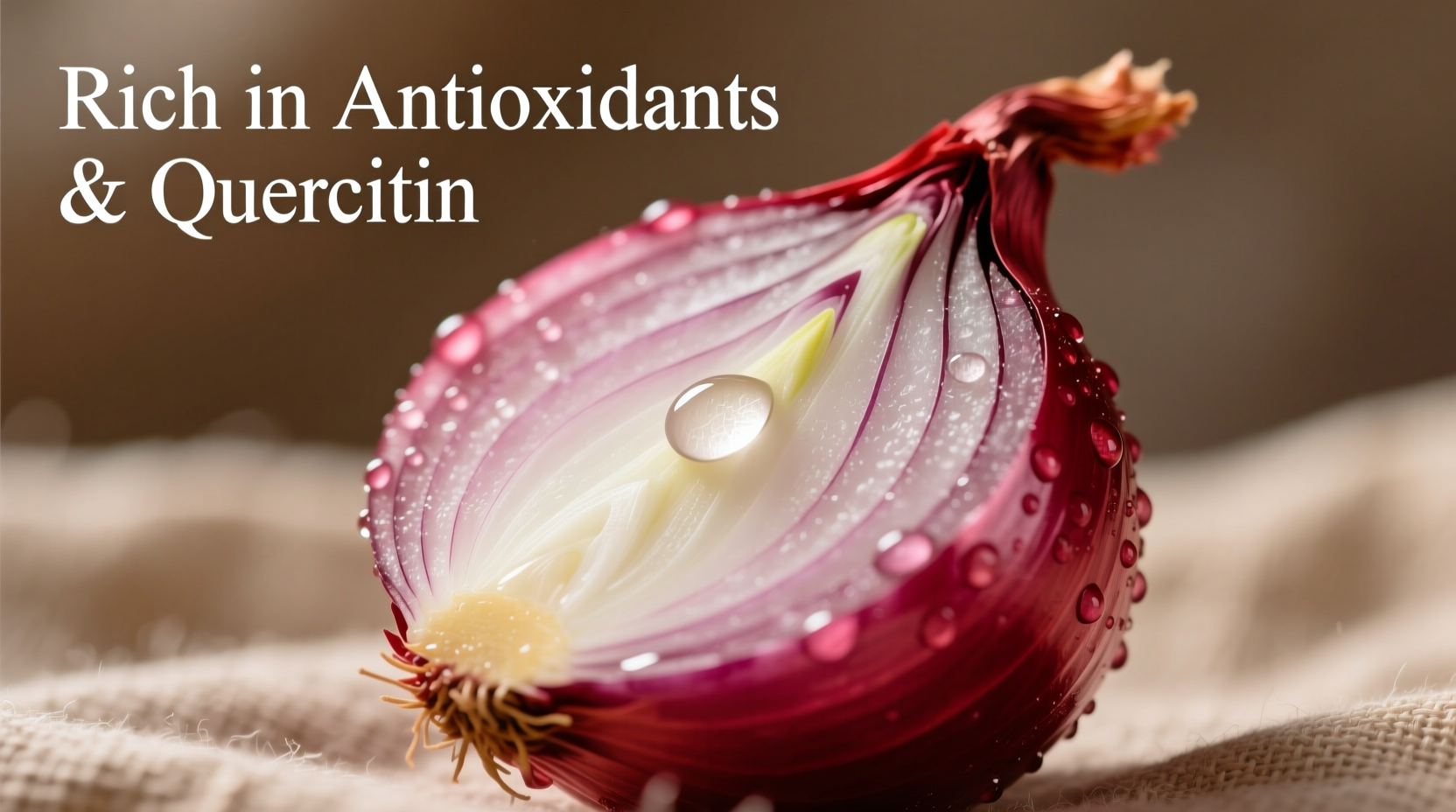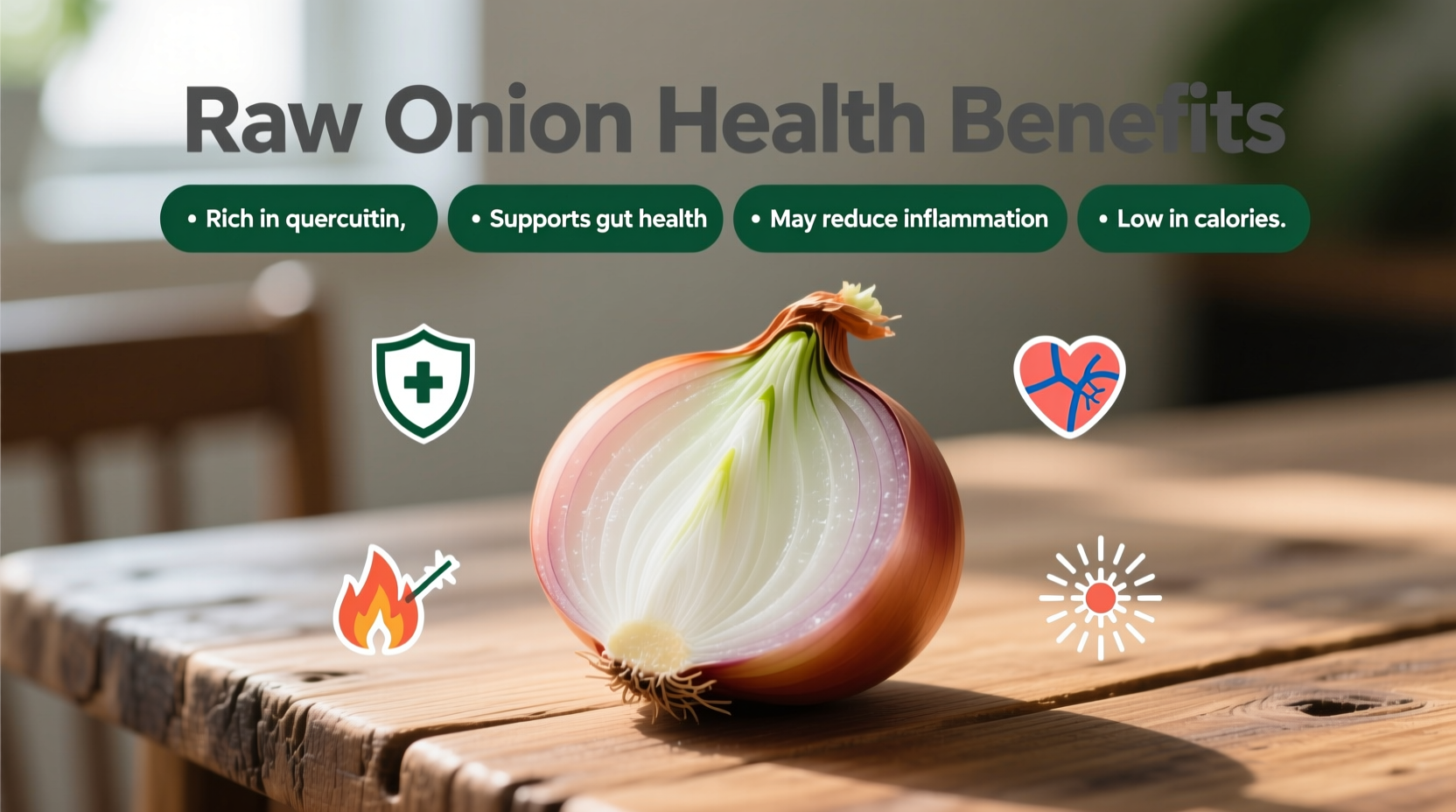When you slice into a raw onion, you're accessing nature's pharmacy in its most potent form. Unlike cooked onions, raw varieties preserve crucial sulfur compounds and flavonoids that offer remarkable health advantages backed by decades of nutritional research. These humble bulbs contain over 25 beneficial compounds that work synergistically to support multiple body systems.
Why Raw Onions Outperform Cooked Varieties
The moment you cut an onion, enzymatic reactions begin converting precursor compounds into active health-promoting substances. Cooking disrupts these processes, diminishing key compounds like allicin—the powerful antimicrobial agent also found in garlic. Research from the Journal of Agricultural and Food Chemistry confirms that raw onions maintain significantly higher levels of quercetin, a flavonoid with exceptional antioxidant capacity.
| Compound | Raw Onion Content | Cooked Onion Reduction | Primary Health Benefit |
|---|---|---|---|
| Quercetin | 198 mg/100g | Up to 30% | Antioxidant, anti-inflammatory |
| Allicin | Present | Nearly 100% | Antimicrobial, cardiovascular |
| Sulfur Compounds | High concentration | Up to 50% | Cancer prevention, detoxification |
| Vitamin C | 7.4 mg/100g | Up to 25% | Immune function, collagen synthesis |
Cardiovascular Protection Through Multiple Pathways
Raw onions deliver comprehensive heart health benefits by simultaneously addressing multiple risk factors. The American Heart Association recognizes quercetin's ability to reduce blood pressure by improving endothelial function. Meanwhile, onion-derived organosulfur compounds inhibit platelet aggregation, reducing the risk of dangerous blood clots.
Regular consumption of raw onions correlates with improved lipid profiles. A 2018 clinical study demonstrated that participants consuming 40-50g of raw red onion daily for 8 weeks experienced significant reductions in LDL cholesterol and triglycerides while increasing protective HDL cholesterol.

Blood Sugar Regulation Mechanisms
For individuals managing blood glucose levels, raw onions offer a natural dietary intervention. The chromium content in onions enhances insulin sensitivity, while the flavonoid quercetin inhibits carbohydrate-digesting enzymes that cause blood sugar spikes. Research published in Nutrition Journal shows that raw onion consumption significantly reduces postprandial blood glucose levels in both diabetic and non-diabetic subjects.
The sulfur compound S-methylcysteine sulfoxide (MCSO) found abundantly in raw onions stimulates insulin production from pancreatic beta cells. This dual-action approach—improving insulin sensitivity while supporting insulin production—makes raw onions particularly valuable for metabolic health.
Cancer-Preventive Properties Backed by Research
Raw onions contain several compounds with demonstrated anti-carcinogenic properties. The National Cancer Institute identifies organosulfur compounds in allium vegetables as potential inhibitors of tumor growth. These compounds induce apoptosis (programmed cell death) in cancer cells while protecting healthy cells.
Epidemiological studies reveal compelling connections between raw onion consumption and reduced cancer risk. A comprehensive review in Nutrition and Cancer found that populations consuming raw onions regularly had 22-50% lower risk of several cancers, with the strongest protective effects observed for gastrointestinal cancers.
Practical Incorporation Strategies
To maximize health benefits while minimizing discomfort, follow these evidence-based approaches:
- Timing matters: Consume raw onions with meals containing healthy fats to enhance absorption of fat-soluble compounds
- Varietal selection: Red onions contain up to 10x more quercetin than yellow varieties according to USDA data
- Preparation technique: Slice and let sit for 10 minutes before eating to maximize beneficial compound formation
- Digestive comfort: Pair with probiotic-rich foods like yogurt to counter potential digestive irritation
Important Contextual Considerations
While raw onions offer significant health advantages, certain populations should exercise caution. Individuals with irritable bowel syndrome (IBS) may experience symptom exacerbation due to onions' FODMAP content. The Monash University Low FODMAP Diet guidelines recommend limiting raw onion intake to 10g portions for IBS management.
Those taking blood-thinning medications should consult their physician before significantly increasing raw onion consumption, as the antiplatelet compounds may interact with medications like warfarin. Similarly, individuals with acid reflux may need to moderate intake as raw onions can relax the lower esophageal sphincter.
Maximizing Your Raw Onion Experience
For optimal health benefits, incorporate raw onions into your daily diet through these practical methods:
- Add thinly sliced red onions to salads for maximum quercetin absorption
- Create onion-infused olive oil by steeping chopped onions for 24 hours
- Include raw onions in fresh salsas and pico de gallo for digestive enzyme support
- Try fermented onion recipes to enhance probiotic content while preserving nutrients
Remember that consistency matters more than quantity—regular moderate consumption delivers greater long-term benefits than occasional large servings. Start with small amounts if you're new to raw onions and gradually increase as your digestive system adapts.











 浙公网安备
33010002000092号
浙公网安备
33010002000092号 浙B2-20120091-4
浙B2-20120091-4